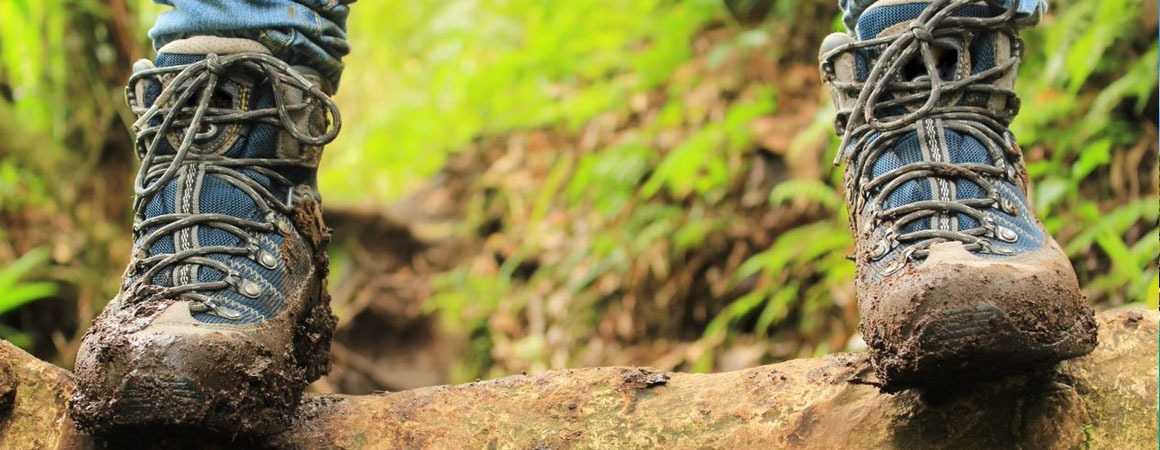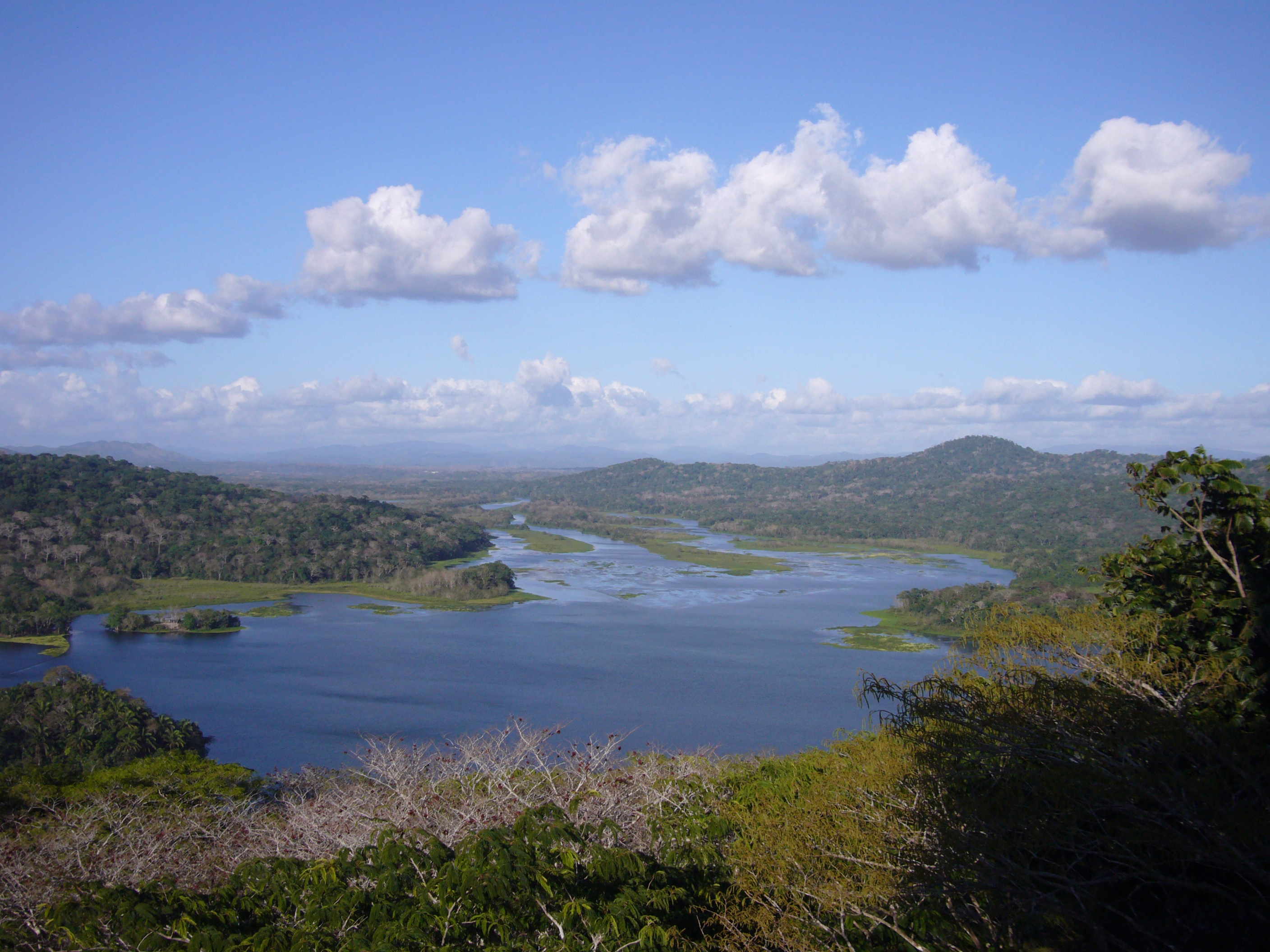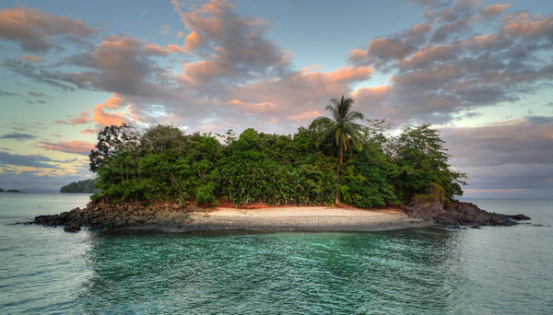Rainforests & Ecotourism

Panama is made up of a bridge of land that unites North and South America, together with numerous islands. Tourism is relatively new to Panama, which is currently viewed as an “off-the-beaten-track” type of destination, popular with backpackers. The country is so ecologically diverse, with rain forests, mountains, cloud forests and beautiful coastlines, that it has a great deal of potential for eco-tourism. The unique geographical location of Panama as a land bridge between two continents has contributed to one of the most complex ecosystems on earth. Panama is making an effort to protect its natural resources with 30% of land set aside for conservation, 25% of this land is designated as national parks, i.e. approximately 5 million acres.
The government of Panama foresees that tourism will become a major contributor to the country’s economy in the future, as well as a sustainable source of employment for indigenous rural communities. It is therefore keen to develop a tourism infrastructure, which at present barely exists, and is determined to do so in a responsible manner that will conserve native flora and fauna and preserve the national culture. There is currently no national master plan for tourism, but Costa Rica’s model for nature-friendly tourism is being followed in some regions. There are also plans for creating eco-resorts within the Panama Canal Watershed.
Of the 29 national parks, forest reserves and wild life refuges, five parks are within two hours’ drive of Panama City, and one is within the metropolitan area itself. According to the classification of US Botanist L.R. Holridge, the isthmus has twelve “life zones”. L. R. Holdridge devised a life zone classification in 1947 as more appropriate to the complexities of tropical vegetation than previous studies. The Darien is a largely unexplored area of wilderness close to the border with Colombia.
Darien has the largest national park in Panama and the second largest in Central America. The Pan American Highway reaches as far as Yavitz but between Yavitz and Colombia the Darien Gap is untouched. These remote rainforests here have been declared a World Heritage Site and a Man and the Biosphere Reserve by UNESCO. The only major tourist project in this area is a world famous fishing lodge on the Pacific coast that can only be reached by air. Primeval rainforests, mystical cloud forests, cool mountain retreats, pristine beaches and islands, and seven thriving indigenous Indian cultures, support tremendous opportunities for the development of ecotourism. Although Panama has only comparatively recently been “discovered” by mainstream tourism, it was has long been a choice destination for knowledgeable experts. .
Wilderness regions are large enough to support the larger cats of Central and South America. Among the 220 mammals and 354 reptiles and amphibians, are 125 animal species found nowhere else in the world. The dense jungle of the Darien or La Amistad National Parks is where you will find the Harpy Eagle, Panama’s national bird and believed to be the most powerful bird of prey in the world.
Darien is also the home of the Embera and Wounaan Indians. In Panama there are 954 recorded bird species of which 122 are migrants. The annual migrations of flocks of birds such as hawks and turkey vultures provide spectacular viewing. The famed quetzal is found in larger numbers in the Chiriqui Highlands than anywhere else in the world. The Audubon Society has long chosen this bird watchers’ paradise for regular tours and studies. World-renowned birding sites such as the Pipeline Road in Soberania, Cana Valley in the Darien, Cerro Azul Mountains and the cloud forest habitats of the highlands constantly set records for bird counts and sightings. Among the 10,000 species of plants found in Panama are 1,200 varieties of orchids, 1,500 types of trees, and 687 different ferns.
The Smithsonian Institute of Tropical Research has been studying plants and wild life in Panama for over 80 years. One of their seven major research centers is Isla Galeta in Colon, where approximately two hectares of the island were formerly used by the US Intelligence service until 1967, this has been transformed into a world class facility for international scientists to do valuable studies of mangrove habitats, coral formations and the 22 species of tropical birds found on the island. These studies have in turn assisted in the monitoring and preservation of Panama’s Caribbean coastline where the islands and reefs shelter a fantastic diversity of marine life.
The Centro de Exhibiciones Marinas on the Causeway in Panama City is also run by the Smithsonian Tropical Research Institute and contains, among other interesting exhibits, two aquariums that allow you to study the differences between fish in the Pacific and Caribbean Seas, so visitors know what to look for when they explore some of the marine national parks on n both coasts. The fish from the Caribbean are the more colorful. Another of Panama’s most popular ecotourism destinations is the Barro Colorado wildlife refuge at Lake Gatun, also a site of ongoing research by Smithsonian scientists. Panama is an incredibly beautiful and ecologically diverse country with low density tourism. It has an enormous potential for the expansion of ecotourism and ecotourism adventures, popular facets of tourism today.
Panama is fast becoming one of the most exciting ecotourism destinations in the world. An example of the recognition of tourist potential and entrepreneurial insight was the “recycling” of a former radar installation within Soberania National Park. This has been transformed into one of the foremost eco-lodges specializing in birding in the world.
Eco-adventure activities available in Panama include swimming, rock climbing, kayaking, whitewater rafting and snorkeling, as well as guided hikes into the forests and mountains with the opportunity to take an aerial ride through the forest canopy on a zip line. Jungle boat rides at Gatun Lake are a good way of seeing monkeys, sloths and iguanas, while a visit to an indigenous tribal settlement provides a cultural learning experience. The Emberas, along the upper reaches of the Chagres River, are particularly welcoming and happy to share their culture with visitors.
If you are planning an ecotourism project you will find many opportunities in Panama. To investigate the opportunities currently available, our real estate section lists eco-lodges or suitable land when available or please click here to contact us.
Foremost among Panama’s National Parks are the following: It is strongly recommended that you use the services of a guide to fully appreciate the avifauna and also to avoid getting lost.
Baru Volcano National Park (14,300 hectares)
Dominated by the extinct volcano Baru Volcan, at 3475 meters above sea level, this is the highest elevation in Panama. On a clear morning both the Pacific Ocean and the Caribbean Sea can be seen from the peak. The resplendent quetzal can be found in the cloud forests on the slopes. Access is from the towns of Boquete and Volcan, located 498 kilometers from Panama City.
La Amistad International Park (407,000 hectares)
This park crosses the border shared by Panama and Costa Rica. It is a World Heritage site with great bio-diversity and numerous endemic species. Seven of the twelve life zones are identified here. Also known as the Friendship Park, it is famous for the harpy eagle and quetzal, and is home to three indigenous Indian groups. Access is from Cerro Punta, Changuinola and Bocas del Toro, located 480 kilometers from Panama City.
Soberania National Park (22,104 hectares)
Soberania is known for its world famous birding location – the Pipeline Road. The park contains excellent hiking trails, and includes the Sendero Las Cruces – the cobblestone trail by which Peruvian gold was transported by mules to Nombre de Dios on its way to Spain. A short walk upriver along the Rio Agua Salud brings you to a waterfall where you can swim. Fishing is permitted in Gatun Lake and the River Chagres. The park is located 25 kilometers from Panama City. There is a park headquarters with rooms for meetings and audiovisual presentations, a store, orchid site, and natural trails. In Aguas Claras there is a checkpoint and a forest ranger facility. There are three natural trails: the Charco, the Camino de Plataciones and Camino de Cruces. In the protected area there is a camping area. There 105 species of mammals, 525 species of birds, 79 reptiles, 55 amphibious and 36 species of fresh water fish, so the park is an important wildlife refuge.
 Chagres National Park (135,000 hectares)
Chagres National Park (135,000 hectares)
This park preserves the main watershed of the Panama Canal including the Chagres River and Alajuela Lake, providing about 80% of the water needed for the canal’s operation, and all the drinking water for Panama City. Excellent hiking trails through elfin forest and you cane see much of the historic Camino Real. Embera Indians originally from the Darien and Bayano have settlements here. The park is located 40 kilometers from Panama City. This park was created with the objective of preserving the natural forest of which it consists, in order to produce water in sufficient quantities and of adequate quality to guarantee normal operations of the Panama Canal, as well as supplying drinking water to the cities of Panama, Colon and La Chorrera and at the same time generating electricity for Panama and Colon..
It must be pointed out that for the Canal to continue working, it is necessary to maintain the water levels, as each ship passing through the locks needs about 52 million gallons of non-recoverable sweet water.
Metropolitan National Park (265 hectares)
A15 minute drive north from downtown Panama City, still within the city limits, this park has numerous nature trails and is the site of extensive tropical rainforest research and an environmental education center. It is home to more than 250 species of birds and 40 species of mammals. The view from the top of Cerro Mono Titi is spectacular, offering a panoramic vista of the city, the canal, the port of Balboa, and the neighboring Parque Nacional Camino de Cruces.
The park covers 232 hectares + 1.159.43 m2. Throughout Central America the Metropolitan National Park is one of the few tropical dry forests on the Pacific Coast that remains.
Camino de Cruces National Park (4,950 hectares)
Just 30 minutes from Panama City, this splendid park was created in 1992 to form an ecological corridor between the Soberania National Park to the north and the Metropolitan National Park to the south, to guarantee the free flow of species between the two parks while at the same time protecting the east bank of the ecological basin of the Panama Canal. Many species of birds and mammals can be seen in this lush rainforest with its waterfalls and streams. The cobblestones of Camino Real continue through the area, a trail constructed by the Spanish to transport gold to Spanish treasure ships off the coast.
Some 85% of the park is covered by tropical forests that are home to varied forest wildlife, and it also has lakes, lagoons, wetlands, rivers and waterfalls. It has various trails: On the Capricornio Trail one can appreciate marmoset monkeys, coati mundis, two-toed and three-toed sloths and different bird species. The El Mirador Trail offers a panoramic view of the forest canopy and a sector of Panama City. The Los Guardaparques Trail has points at which one can appreciate the waters and wildlife of Brazo Camaron Lake and its highest point offers an extraordinary view of the Pedro Miguel and Miraflores locks. The Cardenas Ruins (or Palangana) Trail offers segments of history, from the early days of the US occupation of the old Canal Zone. The Camino de Cruces Trail offers an extraordinary cobblestone stretch of the Camino de Cruces, thus allowing contact with the history of this important colonial-era interoceanic route.
Bastimentos Island National Park (13,226 hectares of which 11,596 are marine)
Located in the Archipelago of Bocas del Toro, this mostly marine park features spectacular white sand beaches, extensive Caribbean mangroves and the superb corals that are home to over 200 species of tropical fish.. Famous Cayo Zapatillas is at the northwest end of the park, with many scuba diving spots. 68 species of birds, 28 of reptiles and 32 classes of mammals can be found here where the rainforest meets the sea. Sea turtles nest on Playa Larga beach from April to October. This park is a ten minute boat ride from Bocas town. Bocas can be reached by plane from Panama City (1 hour) or by road and ferry (14 hours)
The park contains a healthy supply of wildlife; however your exposure to them is somewhat limited. White faced and Titi monkeys are common, as are sloths, iguana and the ever so poplar red poison dart frogs. Due to the fact that no interior trails exist you will be limited to whatever makes itself visible along the Caribbean coast.
 Coiba Island National Park (270,125 hectares of which 216,542 are marine)
Coiba Island National Park (270,125 hectares of which 216,542 are marine)
Although remote, this park is one of the jewels of Panama; its coastal ecosystem includes islands, reefs and 240Km of coastline. It is probably the best location in Panama for whale watching due to the surrounding breeding areas. Due to the island’s use as a penal colony, its restricted access conserved the area. Up to now, 36 species de mammals, 147 of birds and 39 species of reptiles have been identified, including the last area in Panama for the scarlet macaw. Famous Hannibal bank is nearby for those interested in deep sea fishing of marlin, tuna, dolphin and others. Coiba Island is 50 minutes by plane or 10 hours by car and boat from Panama City.
Darien National Park (576,000 hectares)
Darien National Park is the most extensive of all Panama’s national parks. In 1981 it was designated a UNESCO World Heritage Site and a biosphere reserve.Darien is a dense primary tropical rainforest that can be explored only by trail or river. Among many rare birds, this is the home of the famous harpy eagle. At its heart is the Cana Valley, considered to be the top birding site in Central America, particularly known for macaws and parrots. The tallest point in the park is Cerro Tacarcuna, 1,895 meters above sea level. Embera and Wounaan Indians make their homes on the banks of the many rivers and travel by finely built dugout canoes The Park is located 325 kilometers from Panama City.
Darien National Park is state-owned with customary tenure of the indigenous inhabitants accepted in a part of the property; It is originally managed by ANAM. The private non-profit organization ANCON was a major long term supporter, with additional technical and financial contributions from various international agencies and non-governmental organizations. A particularity of the border setting is the strategic importance of the dense mountain forests of the Darien Gap as a natural barrier to livestock diseases, with corresponding legal requirements applicable to parts of the park.
This park is the home of some of the most biological diversities of the world, including the Guatemalan Black Howler, the Night Monkey, the American Crocodile, the Harpy Eagle (Panama’s national bird), the White Mangrove, the Ocelot, the Giant Anteater, the Jaguar, the Bush Dog and the White-lipped Peccary, among others.
The BusinessPanama Group together with Pardini & Asociados
Provides a convenient One Stop Shop offering the services of:
Setting up the company or branch
Applying for visas & residence
Real estate brokerage for locating office or housing
Legal services
Accessing special tax incentives
Relocation services
Assistance with opening bank accounts.
For more information, please contact us.

